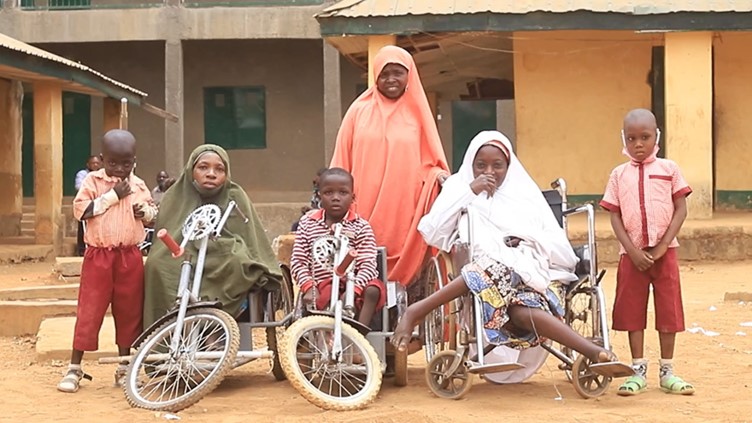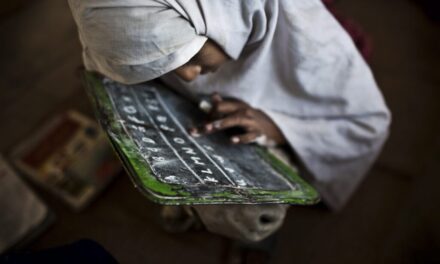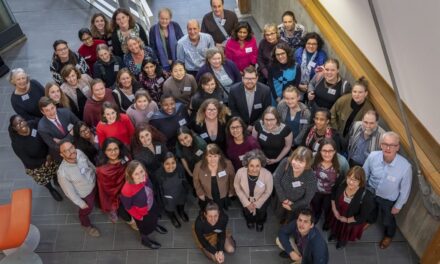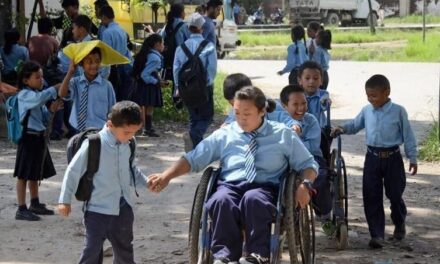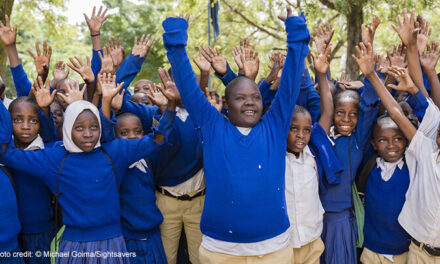This blog was written by Liesbeth Roolvink, Global Technical Lead Education Systems, and Gillian Mackay, Social Inclusion Monitoring, Evidence and Learning Manager, Sightsavers. It was originally published on the Global Education Monitoring (GEM) Report World Education Blog on 28 May 2021.
Disability inclusion has been a neglected, under-prioritised issue in international development. There is a lack of evidence around what works in practice to deliver inclusion, which contributes to difficulty in building effective programmes. For too long, policies have been designed with no consultation with people with disabilities, leaving implementation faltering, or failing to meet expectations. A new education project in Nigeria, designed with and for people with disabilities teaches lessons for how to conduct inclusive and participatory project planning for others in the field.
As recommended by the UN Convention on the Rights of Persons with Disabilities principle ‘nothing about us, without us’ and by the 2020 GEM Report motto ‘All means all’, realising true inclusion in education requires structural, coordinated engagement from organisations of people with disabilities (OPDs) to facilitate joint decision making to ensure that the needs of learners with disabilities are effectively addressed. Following this recommendation, Sightsavers established a steering committee with 20 key stakeholders from federal, state and local government and the OPD community to jointly develop a new innovative community-driven inclusive education project in Nigeria: the Support Mainstreaming Inclusion so all Learn Equally (SMILE) project in Kaduna State.
‘SMILE is a Nigerian project for Nigerians’, explained Chairman of the SMILE steering committee Jake Epelle, CEO/Founder of The Albino Foundation and Convener of Disability Inclusion Nigeria. “All steering committee members are given the opportunity to participate, suggest and implement all the strategies that have been agreed together. Project partners are empowered to implement their ideas by themselves to ensure it is relevant for the specific local context. We are happy with this strategy; it has worked and we call on others to learn from it.”
A learning review was conducted to gather and distil learning from implementing an inclusive and participatory planning process, highlighting both the practical and technical aspects of the project with reference to participation, inclusion and accessibility. Quantitative, qualitative and participatory methods were used consisting of a desk-review of relevant project documentation, consultations with key informants, surveys and written evaluative feedback.
The review found that participants perceived the planning process to be inclusive and participatory. Stakeholders reported that they had been continuously engaged, that their suggestions had influenced the design and they had been afforded decision making powers on the project’s design.
‘I advised on how to organise this project for children living with disabilities’, explainedJosephine Paul Danbo, Inclusive Education Officer in Jema’a Local Government Authority. “We attended workshops, had a series of meetings and selected the pilot schools together. The project will allow us to work with communities to show them that disability has ability in it. Disability is not the end of a life; we want them to know that there is hope. They can learn, become good citizens, and be self-reliant. So, we are ready to put in our best effort to support this project and make it successful.”
Critically, as Dr. Ndubuisi Iroham, representative of the Nigerian Educational Research and Development Council explained, ‘the participatory design process gave a sense of ownership to all the participants.’ By facilitating awareness and advocacy activities, it increased buy-in from key stakeholders and allowed more space for knowledge sharing. This resulted in a project design that is in accordance with the country’s education context, policy environment and institutional and stakeholder strengths to support inclusive education.
The SMILE project is part of the Inclusive Futures Programme, a Sightsavers-led initiative funded by UK aid in which 16 organisations work together to ensure opportunities for people with disabilities and a future that’s disability inclusive. This programme is designed to contribute to the long-term improved well-being and inclusion of people with disabilities in low- and middle-income countries. It focuses on partnering with OPDs to create development programmes in line with the UN Convention on the Rights of People with Disabilities and aims to deliver rigorous evidence to enable disability inclusion in all development programmes.
Monday Okwoli, Programme Manager at the Hope for the Handicapped Persons Foundation said that this is one of the very few projects where he has seen active and meaningful involvement of persons with disabilities. “I believe the SMILE approach works because it has persons with disabilities at its heart. I hope this approach will be adopted for all future intervention for persons with disabilities.’
Recommendations for others conducting future inclusive and participatory project planning processes include:
- ensuring the pre-conditions to inclusion are met (including accessibility of content, communications and collaborative spaces as well as diversity and representativity of stakeholders),
- establishing desired levels of participation at the start of each project,
- undertaking participatory stakeholder mapping and a power analysis,
- building stakeholders’ knowledge of the subject area before commencement of design work,
- agreeing on appropriate methods to ensure meaningful, accessible and inclusive consultation with partners at the commencement of the project
- facilitating varied methods of engagement.

